
Fresh body panels for an F100
Story and photos by Joe Greeves
While this beautifully restored ’56 F-100 might look all original at first glance, that’s not the case. It’s actually a hybrid project, an original donor fitted with aftermarket body and drivetrain components.
Built by Bob Ferguson of Viera, Florida, he initially came across this Effie through a friend as a rusted hulk with only a few salvageable parts. After determining what could be retained, he tapped into a wide selection of aftermarket assets, burning up the phone lines to get what he needed to complete the project.
Of course it’s always a good idea to start with the best donor vehicle you can find, but vintage trucks like the F-100 are already in short supply. Good ones command top prices and even bad ones aren’t cheap. More important, spending the time and money to bring back a rusted fender might cost considerably more than buying a reproduction version. Rather than a hammer, dolly, a can of Bondo, a case of sandpaper, and hours of labor for each piece, it’s easier to simply greet the mailman, grab your ratchet, and bolt on a fresh steel replacement.
Don’t look at this as taking the easy way out though. Think of it as working smarter rather than harder. Ferguson has been in the hobby for decades and is as experienced as they come, especially since this Ford is his 23rd custom vehicle! Using techniques picked up through the years, Bob employs an intelligent approach, taking each phase of construction to a level he’s comfortable with, then turning it over to a pro who bumps it up a notch. “The secret,” he says, “is knowing your limitations and when to call in the experts.”
After Bob checked out the cab, mounted it on a pallet, and stripped the frame, he sorted through the jumbled collection parts and realized he needed a little help from his friends. The first call went to Charlie Butterfield of Charlie’s Customs in Melbourne, Florida, to handle the chassis upgrades. Butterfield boxed the rails, C-notched the rear, and added a Fatman Stage 3, power rack-and-pinion front end.
In the meantime, Bob had been doing his part, researching the aftermarket for necessary additions. Once he hung up the phone, he retrieved the chassis, painting it with POR-15 and adding the 9-inch Ford rear with 3.70 gears. The postman delivered a Classic Performance Products four-link and long leaf-spring package for the rear to create a lower profile. Once installed, all four wheels were fitted with CPP 11-inch disc brakes and coilover shocks.
For rolling stock, Bob liked the clean look of Ridler’s 645 Gray Machined wheels, ordering 18 by 8s up front and 20 by 10s in the rear, then fitting them with Toyo rubber, 245/45-ZR18 and 295/45-ZR20, respectively.
All that extra chassis work was accomplished with future adventures on the local autocross track in mind. This sort of track duty requires a healthy wallop of power. Since the original Ford engine was long gone, Bob went an unusual direction, choosing a 6-liter, fuel-injected LQ4 V8 truck engine and 4L80E transmission from a wrecked GMC motor home. The motor is equipped with an electronic throttle control that eliminates the mechanical linkage and uses a potentiometer to measure pedal angle.
Although it was already decidedly quick in stock form, Bob got on the phone again and contacted Tick Performance in Mount Airy, North Carolina, to obtain the firm’s Elite Performance package. The big V8 and the collection of performance parts were turned over to the team of Gavin Broome and Matt Verzi at Streetheat Customs in Melbourne, Florida, experts in LS upgrades. They eliminated the high-profile truck manifold and replaced it with a reworked EFI system, then modified the heads with bigger valves and stronger springs.
The engine also benefits from a Comp Cam and silver metallic Hedman Hedders that feed twin Flowmasters, creating a performance rumble guaranteed to stir the soul. A cold-air kit, electric fan on the U.S. Radiator, chrome valve covers, and a stainless steel panel on top of the engine team up to catch your eye when the tilt-forward hood opens for display. The package not only looks good, but also ensures the 60-year-old cruiser can easily run with modern sport trucks.
Once the chassis and powertrain were complete, Bob bolted the tired cab to the pristine frame and trucked it to John Bia of Ace’s Autobody Shop in Palm Bay, Florida. Realizing that it was a better approach to use aftermarket sheet metal rather than trying to bang out rusted originals, Bob used his telephone skills once again to assemble a complete renewal package that consisted of fenders, running boards, and a hood from Mid Fifty F-100 Parts, along with a grille and bumpers from LMC.
The aftermarket body parts were basic bolt-ons for the reworked, big-back-window cab, simplifying the normally tedious process of ensuring proper gaps and panel fit. He wisely kept the F-100’s classic lines, but had Ace Autobody tighten the cut lines, and trash some extraneous chrome before spraying the Matrix Andromeda silver and several coats of clear.
Since Bob’s original goal was to create a daily driver that was fun on the road and unique enough to capture a trophy or two at shows, his 60-year-old truck has succeeded on every level. The abundance of aftermarket items speeded the assembly process, retained the vintage lines, and created a thoroughly modern ride, easily able to cope with the demands of the new millennium.

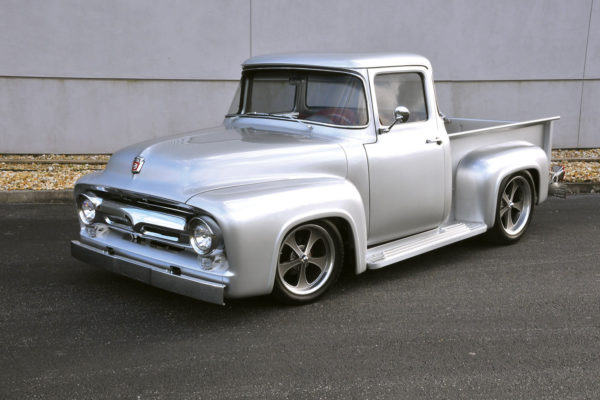
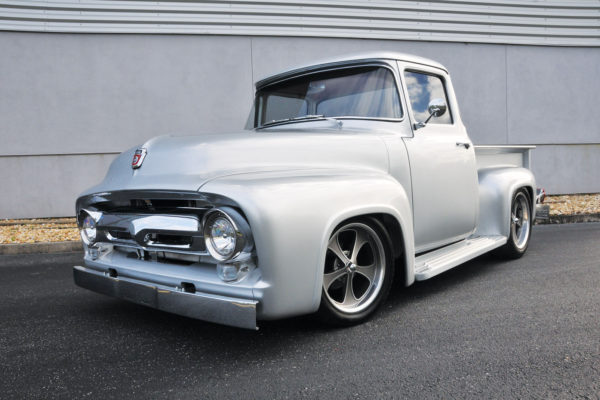
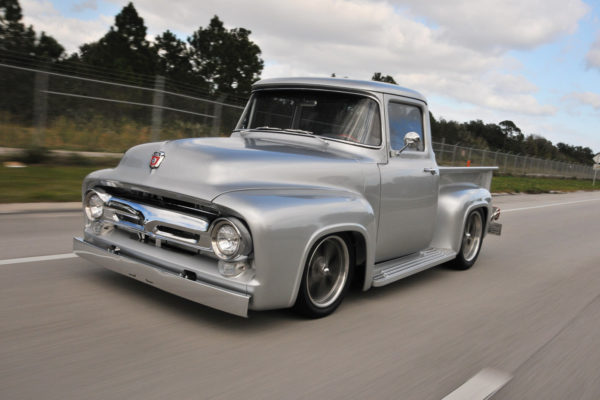
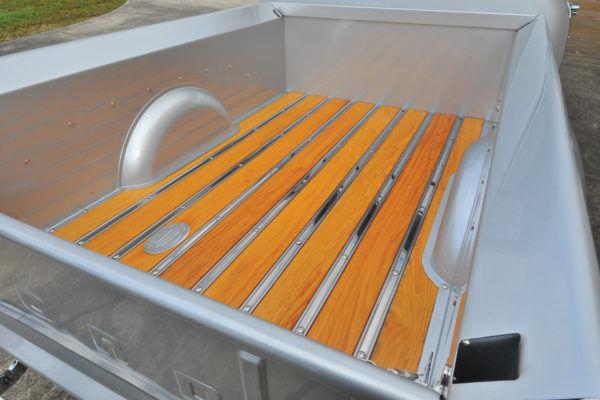
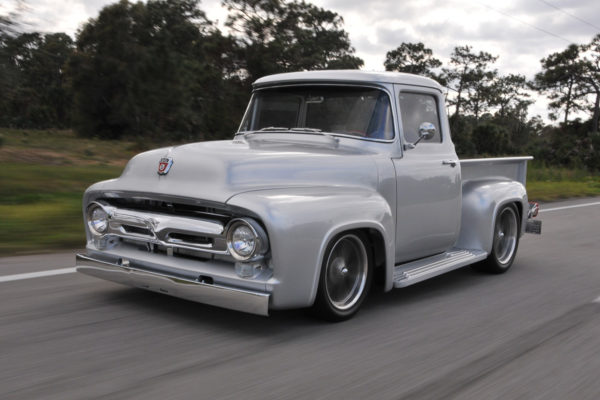
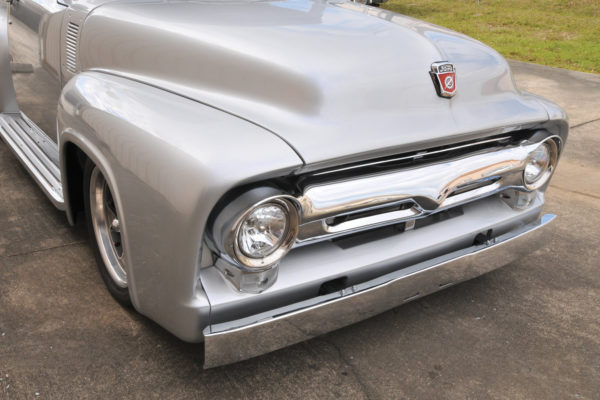
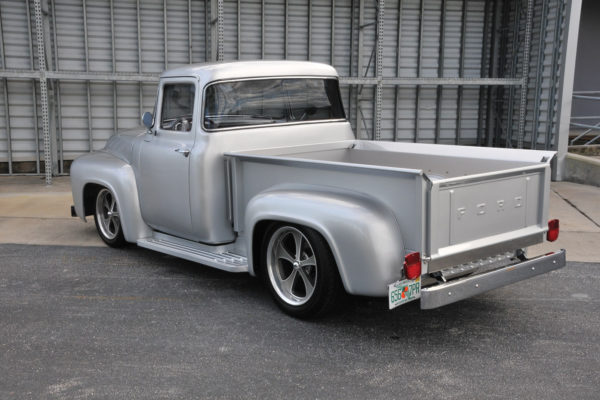
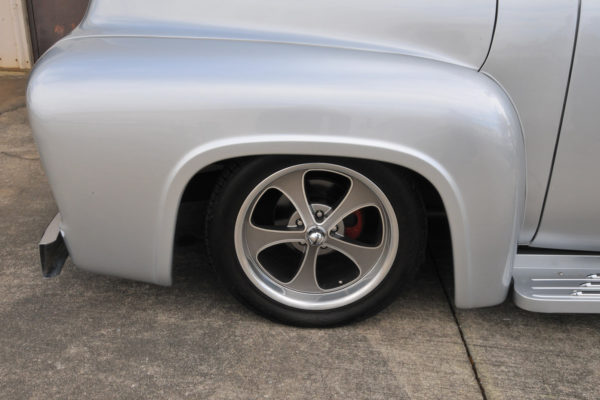
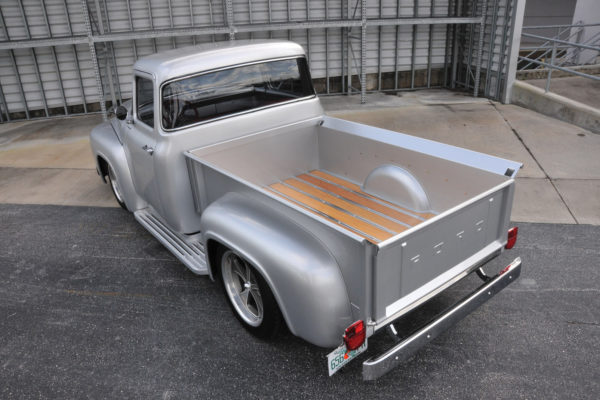
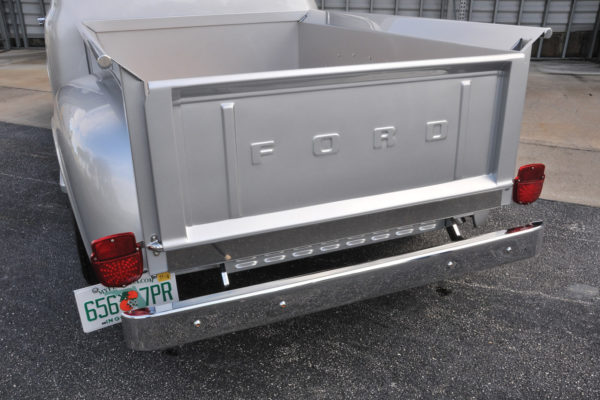
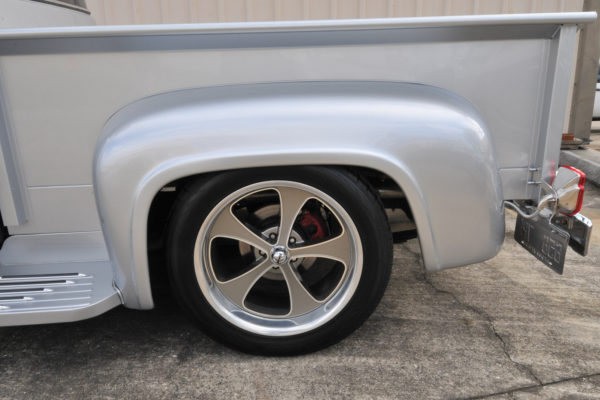
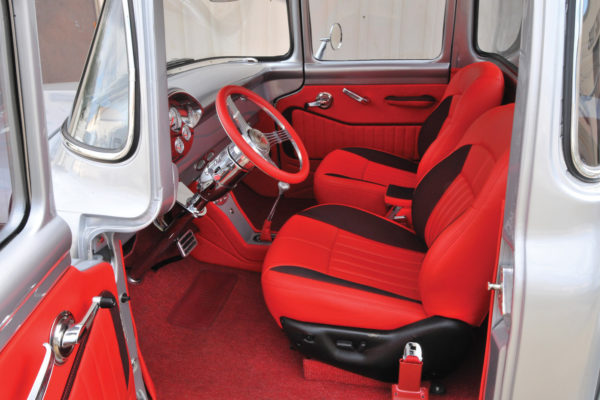
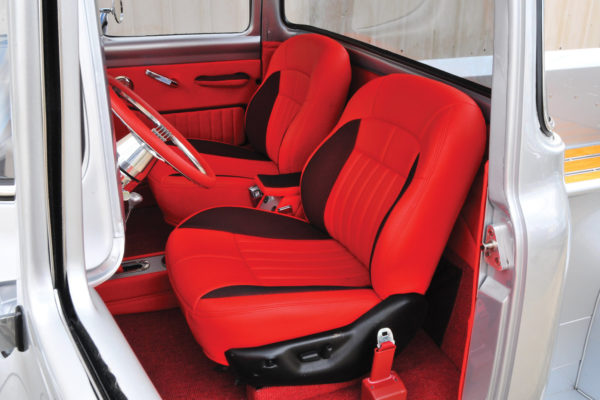
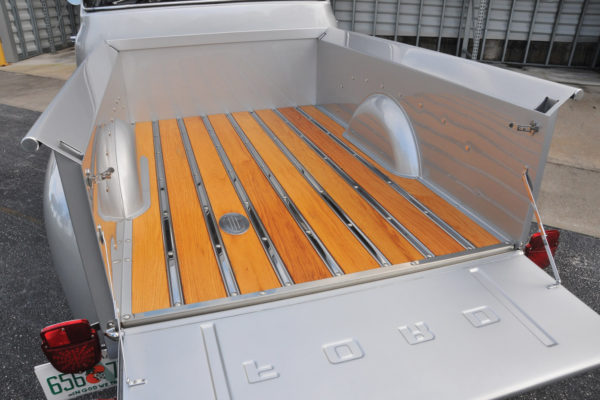
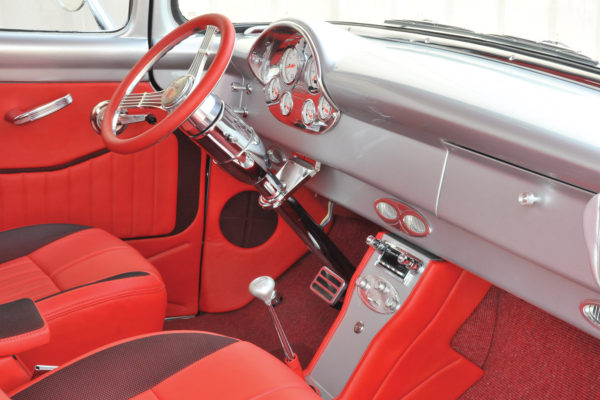
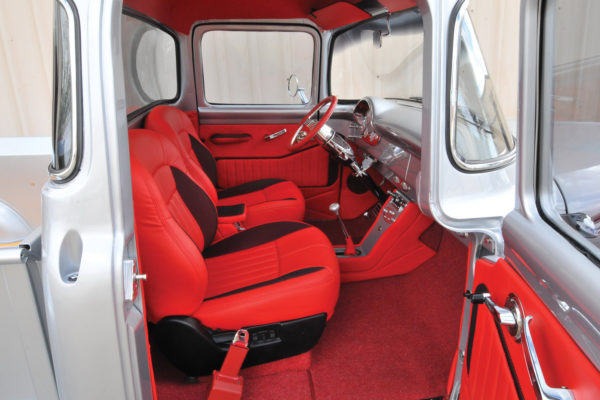
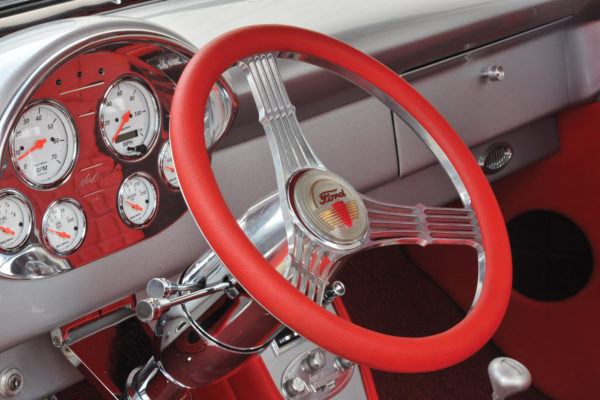
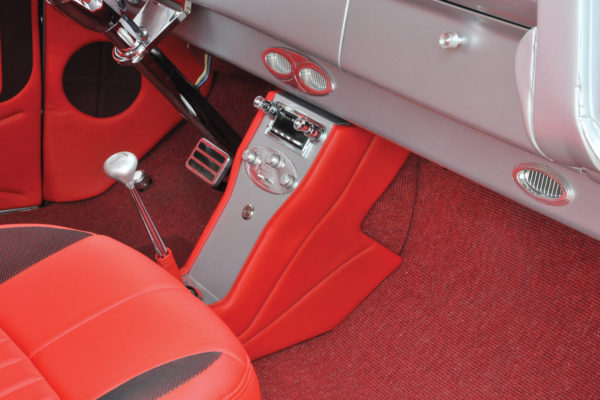
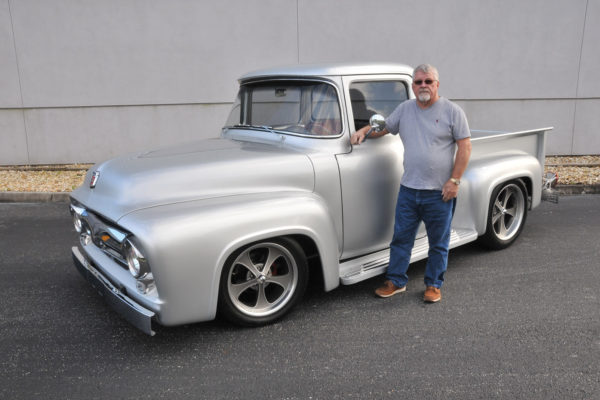
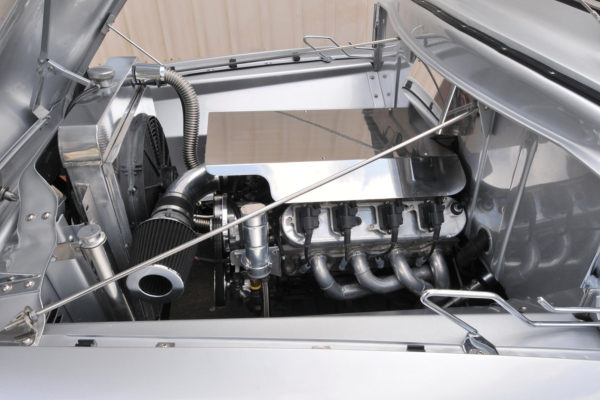
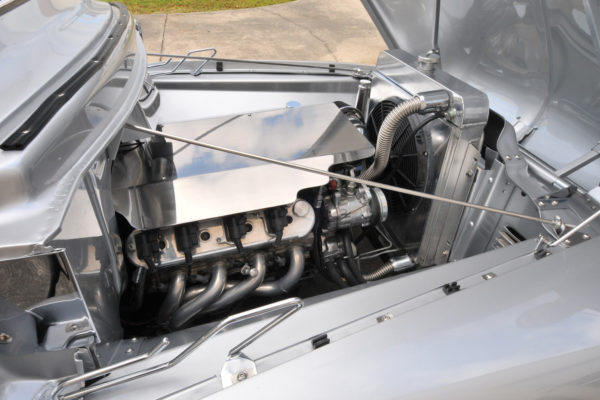
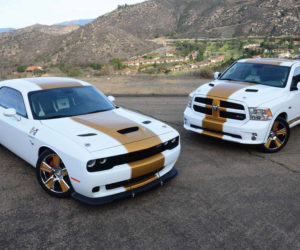
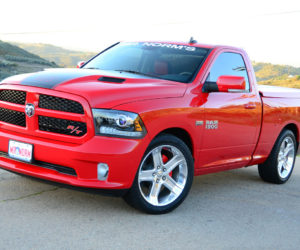
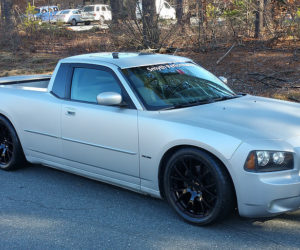
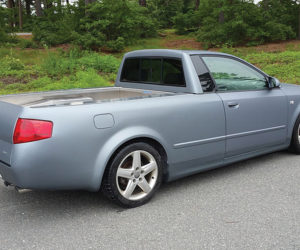
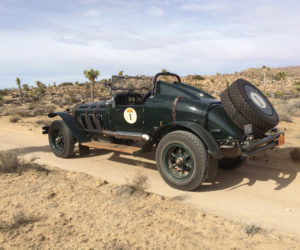
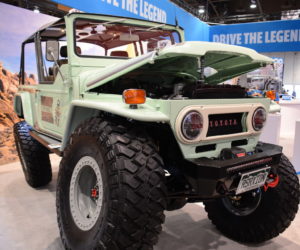




Comments for: Phoned-in F-100
comments powered by Disqus